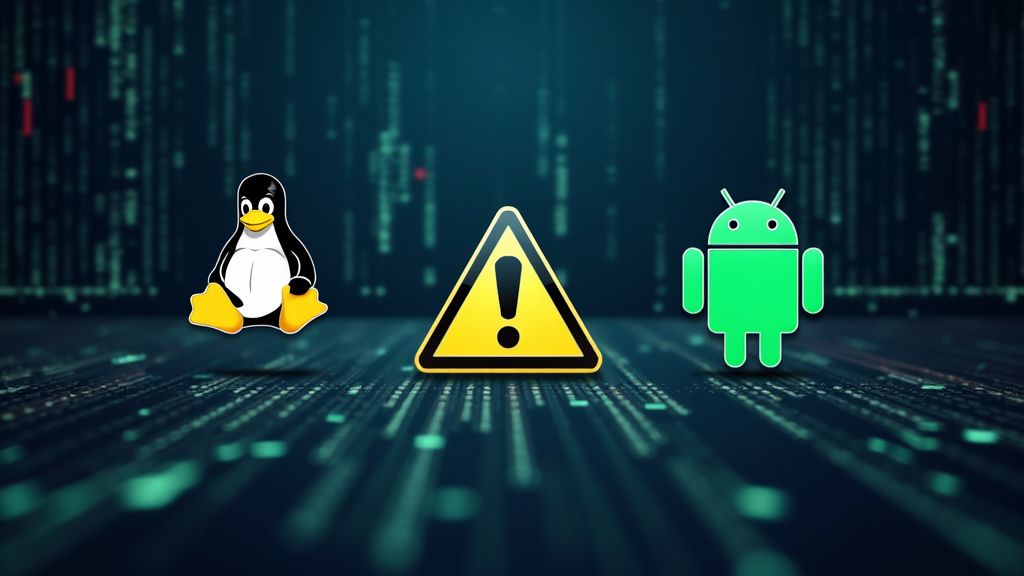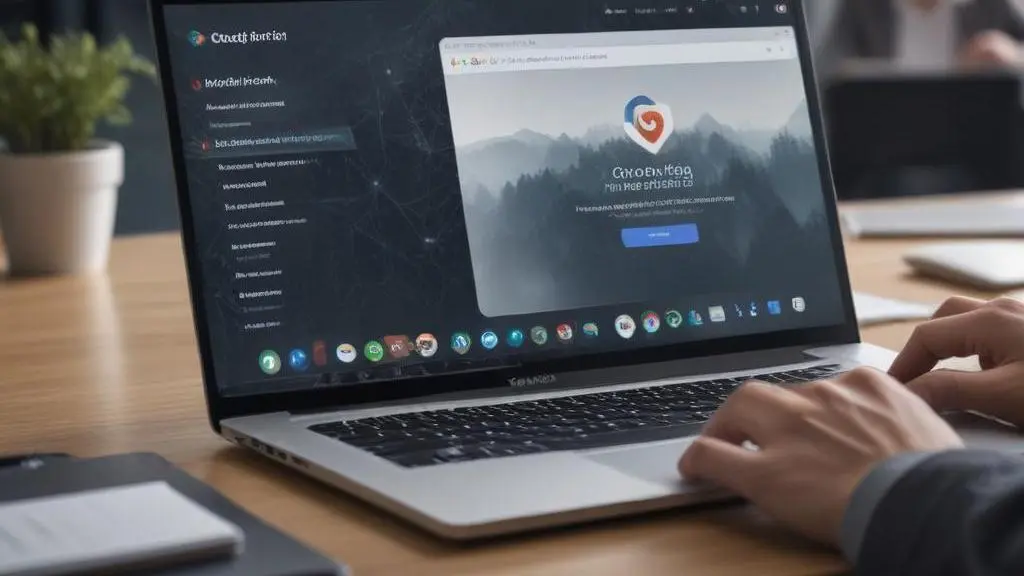The Linux kernel vulnerability CVE-2024-53104 has sparked significant concern among cybersecurity experts, particularly after the Cybersecurity and Infrastructure Security Agency (CISA) issued an advisory urging immediate action. This critical flaw, linked to an out-of-bounds write issue in the USB Video Class driver, poses a serious risk as it can be exploited for privilege escalation attacks. With ongoing limited, targeted attacks leveraging this vulnerability, CISA has set a deadline of February 26 for federal agencies to address susceptible Linux and Android devices. The potential for exploitation of CVE-2024-53104 highlights the broader landscape of Linux vulnerabilities that could threaten the security of federal networks. As organizations scramble to mitigate these risks, understanding the implications of this vulnerability and the associated Android security risks becomes essential for maintaining robust defenses against emerging threats.
The recent discovery of a significant flaw in the Linux operating system, referred to as CVE-2024-53104, has raised alarms within the cybersecurity community. This particular vulnerability, which stems from an issue with the USB Video Class driver, allows attackers to escalate privileges, posing an imminent threat to both Linux and Android platforms. The CISA advisory emphasizes the urgency for organizations to act swiftly in addressing this exploit, as it could be a gateway for further attacks. As federal networks become increasingly targeted, the focus on safeguarding against such Linux vulnerabilities is paramount. These developments underscore the need for continual vigilance and proactive measures to counteract potential privilege escalation attacks.
Understanding CVE-2024-53104: A Critical Linux Vulnerability
CVE-2024-53104 is a severe vulnerability affecting the Linux kernel, primarily related to an out-of-bounds write issue in the USB Video Class driver. This flaw can be exploited by attackers to execute privilege escalation attacks, allowing unauthorized access to sensitive system resources. The fact that it targets core functionality of the Linux kernel raises significant concerns among cybersecurity professionals, as it can be leveraged by malicious entities to gain deeper access to systems, particularly in federal networks where security is paramount.
The vulnerability’s potential exploitation has already prompted the Cybersecurity and Infrastructure Security Agency (CISA) to issue an advisory urging immediate remediation efforts for vulnerable Linux and Android devices. Organizations must prioritize patching these systems before the February 26 deadline, as failure to do so could leave them exposed to targeted attacks that exploit this critical flaw. The ongoing threat landscape emphasizes the need for robust security measures and constant vigilance against emerging Linux vulnerabilities.
The Impact of Privilege Escalation Attacks on Federal Networks
Privilege escalation attacks, such as those potentially facilitated by CVE-2024-53104, pose significant risks to federal networks. These types of attacks allow hackers to gain elevated permissions that can lead to unauthorized access to sensitive data and systems. As outlined in the CISA advisory, the repercussions of such breaches can be catastrophic, including data loss, system outages, and compromised national security. By exploiting vulnerabilities in the Linux kernel, attackers can infiltrate systems and escalate their privileges to execute further malicious actions.
Federal agencies must remain proactive in their cybersecurity strategies to mitigate the risks associated with privilege escalation. This includes staying informed about known vulnerabilities like CVE-2024-53104 and ensuring that all systems are regularly updated and patched. Additionally, implementing strict access controls and monitoring for unusual activity can help detect and prevent exploitation attempts before they escalate into serious incidents.
CISA’s Advisory: Urgency in Addressing Linux and Android Security Risks
The Cybersecurity and Infrastructure Security Agency’s advisory regarding CVE-2024-53104 serves as a critical reminder of the ongoing security risks present in Linux and Android devices. As these platforms are widely used across various sectors, including federal agencies, the implications of neglecting such vulnerabilities can lead to severe consequences. CISA’s guidance encourages organizations to adopt a proactive stance towards their cybersecurity posture by prioritizing the remediation of these vulnerabilities.
In light of the advisory, organizations must recognize the importance of not only addressing CVE-2024-53104 but also understanding the broader context of Linux vulnerabilities. By fostering a culture of cybersecurity awareness and implementing best practices, agencies can better protect themselves against emerging threats. This includes regular training for personnel, maintaining an updated inventory of software, and employing robust monitoring solutions to detect potential exploit attempts.
Exploit Tactics: How Cybercriminals Leverage Linux Vulnerabilities
Cybercriminals are continuously evolving their tactics to exploit Linux vulnerabilities, including the recent CVE-2024-53104. By utilizing advanced techniques, attackers can execute targeted campaigns that take advantage of system weaknesses. For example, forensic data extraction tools may inadvertently facilitate the exploitation of such vulnerabilities, enabling attackers to gain unauthorized access to critical data and system controls.
Moreover, the rise of privilege escalation attacks highlights the need for organizations to remain vigilant against these evolving threats. Comprehensive security assessments and penetration testing can aid in identifying potential vulnerabilities within Linux systems, allowing organizations to address them proactively. As the attack landscape continues to shift, understanding the exploit tactics used by cybercriminals will be essential in implementing effective defense strategies.
Enhancing Security Measures Against Linux Kernel Vulnerabilities
To combat vulnerabilities like CVE-2024-53104, organizations must focus on enhancing their security measures across Linux and Android platforms. This includes implementing strict patch management policies to ensure that all systems are regularly updated with the latest security fixes. Additionally, utilizing intrusion detection systems can help identify unusual patterns of behavior that may indicate a potential exploitation attempt.
Furthermore, organizations should consider adopting a layered security approach that combines various defense mechanisms, such as firewalls, antivirus software, and endpoint protection solutions. By creating multiple barriers to entry, organizations can significantly reduce the likelihood of successful attacks on their systems. Training employees on cybersecurity best practices is also critical, as human error can often lead to vulnerabilities being exploited.
The Role of the Five Eyes Network in Cybersecurity
The Five Eyes network, consisting of intelligence agencies from Australia, Canada, New Zealand, the UK, and the US, plays a pivotal role in global cybersecurity efforts. Recently, the network issued security guidelines aimed at enhancing forensic visibility in network edge devices, which could help organizations detect and respond to attacks more effectively. By sharing intelligence and best practices, the Five Eyes network strengthens the collective defense against emerging threats, including those targeting Linux systems.
Collaboration among member nations is crucial, especially as cyber threats become more sophisticated. The guidelines issued by the Five Eyes network emphasize the need for manufacturers to improve the security of their products, thereby reducing the attack surface for vulnerabilities like CVE-2024-53104. This collaborative approach not only benefits federal agencies but also extends to private sector organizations, fostering a more secure digital landscape.
Forensic Data Extraction Tools: Risks and Mitigations
Forensic data extraction tools are essential in cybersecurity investigations, but they can also pose significant risks if not properly secured. The potential for these tools to exploit vulnerabilities like CVE-2024-53104 highlights the importance of thorough vetting and regular updates of such software. Organizations must ensure that these tools are configured correctly to minimize the risk of unauthorized access or exploitation during investigations.
Moreover, organizations should implement strict access controls around the use of forensic tools to prevent misuse. Regular audits and assessments can help identify potential security gaps and ensure that these tools do not become entry points for cybercriminals. By adopting a proactive approach to managing forensic data extraction tools, organizations can enhance their overall cybersecurity posture and mitigate the risks associated with Linux vulnerabilities.
The Importance of Timely Remediation in Cybersecurity
Timely remediation is critical in cybersecurity, especially when addressing known vulnerabilities like CVE-2024-53104. The CISA advisory emphasizes the urgency for federal agencies to act swiftly, as delays in patching systems can lead to exploitation and potential breaches. Organizations must establish clear protocols for responding to security advisories and ensure that all personnel understand the importance of prompt action.
In addition to patching vulnerabilities, organizations should also conduct regular security assessments to identify any other potential weaknesses within their infrastructure. By prioritizing timely remediation and fostering a culture of proactive cybersecurity practices, organizations can significantly reduce their risk exposure and enhance their resilience against cyber threats.
Preparing for Future Linux Vulnerabilities
As technology evolves, so do the vulnerabilities associated with operating systems like Linux. Organizations must remain vigilant and prepared for future vulnerabilities similar to CVE-2024-53104. This involves investing in ongoing training for IT personnel, staying informed about emerging threats, and adapting security strategies to address new challenges. Regularly reviewing and updating security policies will also play a crucial role in maintaining a secure environment.
Additionally, collaboration within the cybersecurity community can provide valuable insights into managing Linux vulnerabilities. By participating in information-sharing initiatives and engaging with industry experts, organizations can better understand the evolving threat landscape and develop effective mitigation strategies. Preparing for future vulnerabilities is essential for safeguarding sensitive data and maintaining the integrity of systems across various sectors.
Frequently Asked Questions
What is the significance of the Linux kernel vulnerability CVE-2024-53104?
The Linux kernel vulnerability CVE-2024-53104 is critical because it allows attackers to exploit a USB Video Class driver out-of-bounds write issue for privilege escalation. This makes it a prime target for cyberattacks, especially against federal networks, as highlighted by the CISA advisory.
How can organizations protect themselves from exploit CVE-2024-53104?
Organizations can protect themselves from exploit CVE-2024-53104 by promptly applying security patches provided by their Linux distributions and following the CISA guidelines to remediate vulnerable Linux and Android devices by the specified deadlines.
What types of attacks are associated with Linux vulnerabilities like CVE-2024-53104?
Linux vulnerabilities such as CVE-2024-53104 are often associated with privilege escalation attacks, where an attacker gains elevated access levels to system resources, potentially compromising sensitive data and system integrity.
What are the potential impacts of CVE-2024-53104 on Android security?
The CVE-2024-53104 vulnerability poses significant Android security risks, as Android devices utilize the Linux kernel. Exploitation of this vulnerability could allow attackers to escalate privileges and access sensitive information on affected devices.
What steps has CISA taken regarding the Linux kernel vulnerability CVE-2024-53104?
CISA has urged federal agencies to remediate the Linux kernel vulnerability CVE-2024-53104 by February 26. They emphasize the importance of addressing this critical flaw to protect against its potential exploitation in cyberattacks.
How does CVE-2024-53104 relate to forensic data extraction tools?
The GrapheneOS development team suggests that CVE-2024-53104 may have been utilized by forensic data extraction tools to exploit the out-of-bounds write issue, highlighting the risk of these tools being co-opted for malicious purposes.
Why are security flaws in the Linux kernel considered prime targets for cyberattacks?
Security flaws in the Linux kernel, such as CVE-2024-53104, are considered prime targets for cyberattacks because the kernel serves as a critical component of many operating systems, including Linux and Android, making vulnerabilities highly impactful and potentially exploitable across multiple devices.
What recent actions have been taken concerning vulnerabilities in software like Microsoft .NET and Linux?
Recently, CISA added high- and critical-severity flaws in Microsoft .NET and Apache OFBiz to their Known Exploited Vulnerabilities catalog, alongside advising on the critical Linux kernel vulnerability CVE-2024-53104, indicating a broader focus on enhancing cybersecurity measures across platforms.
| Point | Details |
|---|---|
| CVE-2024-53104 | A critical Linux kernel vulnerability that allows for privilege escalation through a USB Video Class driver issue. |
| Targeted Attacks | Ongoing limited attacks are exploiting this vulnerability, highlighting its critical nature. |
| CISA Warning | CISA has urged federal agencies to remediate affected Linux and Android devices by February 26. |
| Forensic Tools Usage | The vulnerability may have been leveraged by forensic data extraction tools, raising concerns about data security. |
| Broader Implications | Security flaws in the Linux kernel are critical targets for cyberattacks, posing significant risks to federal networks. |
| Related Security Updates | CISA added high- and critical-severity flaws from Microsoft .NET Framework and Apache OFBiz to the Known Exploited Vulnerabilities catalog. |
| Five Eyes Guidance | The Five Eyes network has issued guidelines for improving forensic visibility in network edge devices. |
Summary
The Linux kernel vulnerability CVE-2024-53104 has emerged as a significant security concern, prompting the Cybersecurity and Infrastructure Security Agency (CISA) to issue urgent remediation directives. This vulnerability, stemming from a critical out-of-bounds write issue in the USB Video Class driver, enables privilege escalation and has been exploited in targeted attacks. As the threat landscape evolves, federal agencies must prioritize addressing this vulnerability to safeguard their networks against potential exploitation. The recent advisories and security guidelines underscore the necessity for enhanced forensic visibility and proactive measures in the face of increasing cyber threats.












Leave a Reply